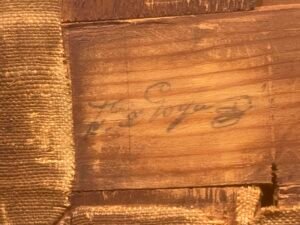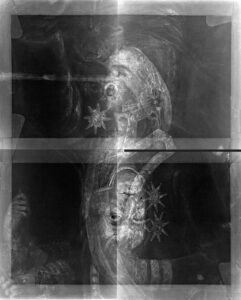Madrid, April 5, 2024.
WE REPRODUCE ARTICLE PUBLISHED IN THE ABC NEWSPAPER ON April 5, 2024 BY MANUEL MORENO
Javier Gallego y Sánchez-Rollón, lawyer and art expert, described it as the «greatest change» in the history of art: the painting by Francisco de Goya y Lucientes that disappeared in Talavera de la Reina (Toledo) 216 years ago . And this week he has located the canvas that he had been looking for for three decades. «He gave me a rush when I saw him. The live picture is impressive, although it seems small. «I’m a bit in a state of ‘shock’ because I’ve been behind this for fifteen years,» he tells ABC.
The precious piece, valued between 15 and 20 million euros according to Gallego, was closer than he had recently imagined. It is located in the Community of Madrid. The rightful owner of it, a collector who wishes to remain anonymous, acquired it at a public auction and has it stored in a safe deposit box.
The canvas, measuring 69 by 60.5 centimeters, is a half-length portrait of Ferdinand VII at age 23. It was commissioned from Goya by the Talavera City Council on August 25, 1808, it was placed in a canopy in the town hall in September and it disappeared.

«When Spain was being invaded by Napoleon’s troops, a mysterious hand changed this portrait, which hung on the walls of the town hall. He replaced it with another of the same size and from the same king, but made by another painter, Vicente López Portaña. A canvas of poorer quality and, of course, infinitely less valuable. «A complete change had been made.» Gallego said it last September and the publication of ABC has been key to solving the enigma, according to this lawyer, who was commissioned last summer by an individual to investigate the legal viability and location of the painting.
A few weeks ago, a colleague contacted Gallego and told him that a client had the canvas he was looking for. «He showed me documents, an x-ray of the painting and the seal of the Galarza and Goicoechea Society, which were Goya’s in-laws.» On Tuesday, Gallego was able to see the work that kept him up at night. «Her rightful owner took her out of the security camera and hung her up for me to see,» he recalls excitedly .

«On the frame there is Goya’s signature and the stamped seal of the Galarza and Goicoechea Society,» he emphasizes before talking about the x-ray of the canvas, in which two other portraits of Fernando VII are also hidden. «The technical studies of pigments, x-rays and reflectologies fully agree with the materials used by Goya and his way of working ,» says the art expert, who dwells on another detail: «I know of very few works that have as much documentation as this one.» . In the Archive of the Talavera town hall there are the shipping receipts from Galarza and Goicoechea and also the receipt for the amount of the painting signed by Goya.

The owner has not revealed to Gallego where he bought the canvas or how much he paid for it. What he has told her is that he intends to temporarily transfer the painting to the Ciudad de la Cerámica City Council to exhibit it in the city, with which the Zaragoza artist had a close relationship. Theirs are also the canvases of two Talavera women, María Vicenta Barruso Valdés and her mother, Leonora Antonia Valdés de Barruso, for which they paid 15 million euros, a record figure, at Christie’s auction house in New York. Goya painted them three years before the mysterious disappearance of the painting of Ferdinand VII, now clarified.
#javiergallegolawyer
Far far away, behind the word mountains, far from the countries Vokalia and Consonantia, there live the blind texts. Separated they live in Bookmarksgrove right at the coast of the Semantics, a large language ocean. A small river named Duden flows by their place and supplies it with the necessary regelialia. It is a paradisematic country, in which roasted parts of sentences fly into your mouth.